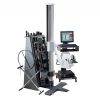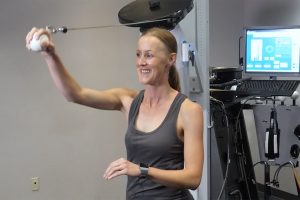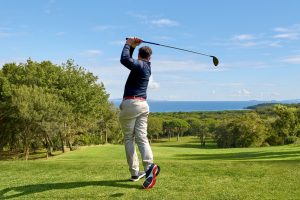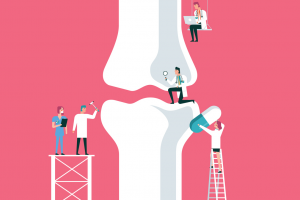
Exploring Treatment Options for Lateral Epicondylitis
Treatment GuidelinesExercise and stretching improve mobility and flexibility – not only of the ECRB itself, but of the surrounding areas as well. Therapists should assess the extensor carpi radialis longus, supinator, digital extensors, and other muscles for strengthening and stretching.
Despite its nickname ‘tennis elbow,’ a relatively small percentage of lateral epicondylitis cases result from actually playing a racket sport. More often, employees develop the condition from the physical demands of their occupation1. Performing forceful or repetitive arm movements, especially at awkward angles and/or for a long period of time, can lead to the condition2. Tennis elbow frequently begins as a degeneration of the tendinous origin of the ECRB (extensor carip radialis brevis)3.
As tennis elbow affects an estimated 3% of the population2, several treatment options have emerged – ranging from medical to therapeutic. Common treatments include medication, physical therapy, exercise, and stretching. Medical professionals today debate which is more effective. Let’s explore some of the pros and cons of each.
Medical and Therapeutic
On the medical side, treatments aim to decrease pain and control inflammation. Clinicians often recommend NSAIDs, corticosteroid injections, rest, icing, elevation, and counterforce braces. Current studies are testing platelet-rich plasma injections for the treatment of tennis elbow. Although these options treat the painful symptoms, they lack the restorative and preventive qualities of physical therapy.
On the other hand, physical therapy can either be the main course of treatment, or a mode of post-operative rehabilitation for severe cases. Before beginning physical therapy, clinicians should evaluate the distal and proximal upper extremities and cervical and thoracic spine to check for coexisting impairments.
Although many therapists recommend orthotic devices, shockwave therapy, laser therapy and acupuncture, recent trials conclude that there is insufficient clinical evidence for these treatments. More clinical trials show evidence to support the use of manual therapy in treating tennis elbow, such as glides, manipulation, and deep traverse friction massaging.
Exercise and Stretching
Key components to physical therapy, exercise and stretching are proven methods of treatment. Therapeutic exercise not only reduces pain, but also restores normal musculoskeletal function. Implemented properly, exercise can improve mobility, strength, and endurance of the musculotendinous unit, especially with progressively resistive exercises.
Exercise and stretching improve mobility and flexibility – not only of the ECRB itself, but of the surrounding areas as well. Therapists should assess the extensor carpi radialis longus, supinator, digital extensors, and other muscles for strengthening and stretching.
In the early stages of exercise treatment, static or isometric (with no motion) activities are the most sensitive to the patient’s low pain tolerance, as force production is controlled by the patient’s effort. After some time, dynamic (with motion) exercise can be implemented using fixed resistance (isotonic) or at a fixed speed (isokinetic). Isotonic exercises generally provide better muscle training, as they more closely replicate real-life activities, such as lifting.
Isometric and isotonic exercise are the best methods to help injured employees connect therapy exercises to their occupational activities. For example, Isometric exercise helps strengthen the wrist early in rehabilitation, and includes several stabilization activities. Isotonic exercises, including both eccentric and concentric, are highly functional, as most occupational and sport activities require a combination of both. Important to note, however – more evidence suggests that eccentric exercise is better for reducing pain and increasing muscle strength more effectively than concentric exercise.
Treatment at Home
In conjunction with clinical therapies, completing home exercises is also very important to patients’ recovery from tennis elbow. The continuation of care helps them build strength and mobility. Common home treatments for lateral epicondylitis include deep traverse friction massage, stretching, trained isometric and eccentric exercises, reserved elastic bands, and free weights.
In summary, a combination of these best treatment practices – customized for each patient’s specific needs – is the most effective strategy for managing and providing relief from lateral epicondylitis.
Janna Jacobs, PT, CHT, CEAS
Senior Clinical Research Specialist
- Kivi P: The etiology and conservative management of humeral epicondylitis. Scand J Rehabil Med. 1083;15:37-41.
- Shiri R, Viikari-Juntura E, Varonen H, et al. Prevalence and determinants of lateral and medial epicondylitis: a population study. Am J Epidemiol. 2006;164:1065–74.
- Kraushaar BS, Nirschl RP: Tendonosis of the elbow (tennis elbow). Clinical features and findings of histological, inmmunohistochemical, and electron microscopy studies. J Bone Joint Surg AM. 1999;81:259e78.





